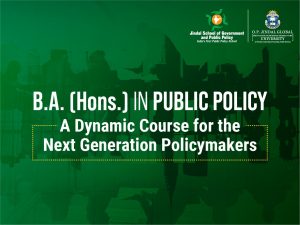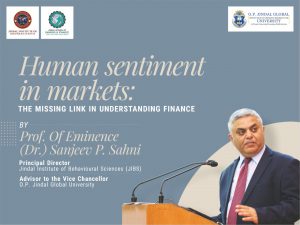
Imagine there is an independent dome, housing 100 people. The dome, a capsule of self-sufficient resources, has been in existence for generations. It is divided into several regions. Every region has its own specificities and features. Some regions are richer, some have more natural resources and some are fighting for their survival for a lack of resources.
Each day, the activities of the 100 people, divided into such regions, impact the dome-system. The operating word that dictates the dome-system is scarcity. Scarcity of resources, both natural and economic. Those regions within the dome, which are fighting for their survival for want of economic opportunities and resources, are also facing the worst impacts of the poisonous changes in the system – changes that are occurring due to the exploitation of the limited resources available under the dome. While they fight for their survival, they also need to thrive, and for this, they need ample growth.
Growth, within the dome, has historically been achieved through the extraction of natural resources. It has been aimed towards making more wealth, more goods and commodities, and an abundance of luxuries. Better cars, better hardware products, better energy services. All these are direct consequences of extractive industries. So in essence, ‘growth’ is leading to a net gain in fossil fuel consumption through such extractive industries. Fossil Fuel consumption, essentially, is leading to poisonous gases (or gases that are harmful to the dome-system above the prescribed concentrations) being released in the dome-system. The system is dying, and so are its inhabitants.
Every year, a grand council of the people comes together to ascertain the way forward. Collective action is imperative to save the diseased dome. Every region approaches the council with their respective priorities, of growth, of survival, and everything in between. The scientists suggest that time is running out, and the signs are evident in attribution science with instances of floods and droughts and famines and cyclones becoming fiercer and more common. Once in a decade events are taking place every year now. The dome is collapsing.
The above hypothetical example seeks to explain the problem at a scale that is understandable to the reader. One of the issues with environmental diplomacy is the scale of the climate change crisis. It impacts different regions of the world differently. Thus the priorities of such regions is seldom same.
As discussed, scarcity of resources, priorities of regions and nations, will of governments, principles and matrices of equity, and the scale of the problem are issues that often create an almost helpless maze of impasses that are internalised on the bases of diversity.
The Conference of Parties (COP) to the United Nations Framework Convention on Climate Change met for the 26th time in Glasgow recently. The meeting was touted to be a now-or-never kind of affair that was supposed to push the world towards a concrete and tangible decarbonisation by 2050 path. However, the collective action problem, one where, everyone has a choice between two alternatives and where, if everyone involved acts rationally, the outcome will be worse for everyone involved, in their own estimation, than it would be if they were all to choose the other alternative – played its part. The COP 26 turned out to be a failure, or a slight success, depending on your expectations from the meeting.
Outside of political will and varying priorities, the fact of the matter remains that since pre-industrial levels, the earth’s temperature has risen by 1.1 degrees. This has already impacted the planet in terms of tangible apocalyptic weather events that otherwise occurred once in a generation. Chennai, for example, which has been facing acute water scarcity, was again met with floods causing death and destruction. It is suggested that in a moderate emission scenario, the temperature rise by the end of the century will be 2.9 degrees. This is more than double the current rise. The consequences would be dire with the first and worst affected being those who have comparably not contributed as much to the current crisis.
What have been seen as natural disasters now need to be seen as human-caused disasters, and issues like migration, sea level rise, public health need to be seen as functions of our everyday activities in terms of the carbon footprint. Our consumption patterns have not been indicative of the crisis and require an all encompassing grassroots to board-room to parliament approach to relook at our fiscal structures and pollution related externalities anent the value versus cost taxation structures in place.
The planet faces a challenge that is beyond any that it has seen, and the inherent issues with collective action need to be solved before there is nothing one can do. While ambitious targets have been put forth by various governments and non-state actors, the difference between such ambitions and their realisation remain effective and just execution, an issue that has been generally lacking despite rare instances of green-will outcomes.
Our dome is collapsing, and we need to act now to save it.
Author: Prof. Eeshan Chaturvedi, Assistant Dean and Assistant Professor, Jindal School of Environment & Sustainability, O.P. Jindal Global University.


